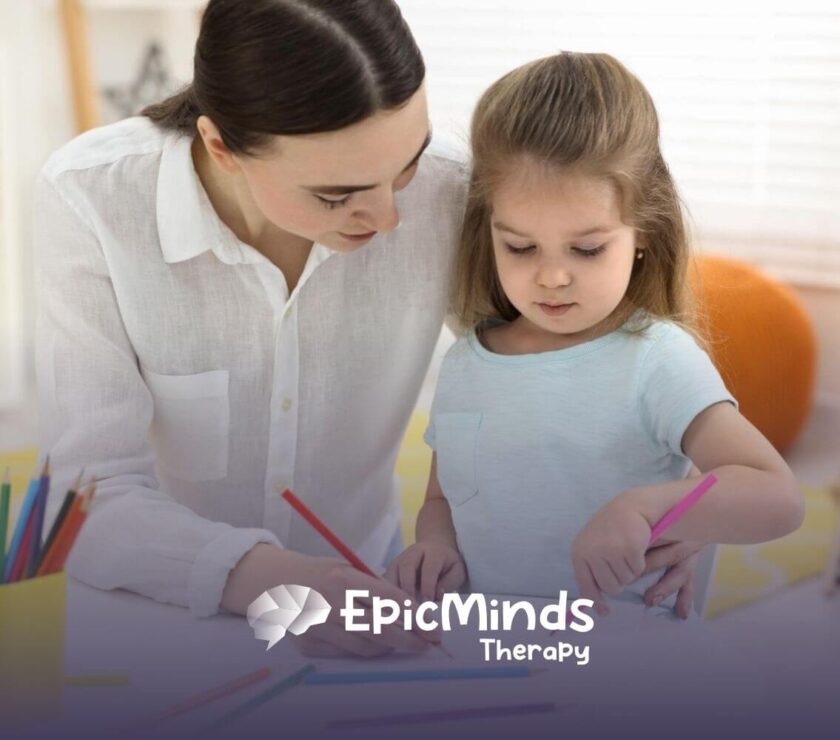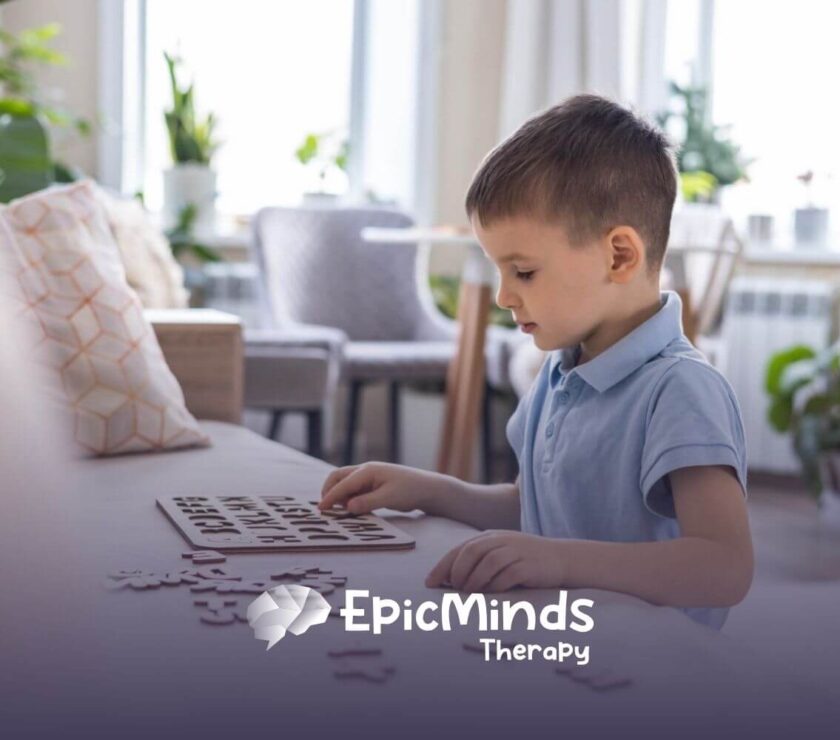Finding the best education for an autistic child is a journey every parent approaches with care, love, and sometimes uncertainty. As an ABA therapist, I often tell families that there’s no single “right” path—what works beautifully for one child may not work at all for another. The goal isn’t perfection but progress, and education plays a central role in that growth.
I remember one family I worked with whose son struggled in a mainstream classroom. The noise, transitions, and unpredictable schedule were overwhelming. After collaborating with the school through school-based ABA and making simple adjustments—like using visual supports, scheduling sensory breaks, and tailoring assignments—his experience transformed.
He began participating with confidence and even looked forward to school. This taught me that with the right environment and strategies, every child can thrive.
Understanding Autism and Educational Needs
Every autistic child has a unique profile of strengths and challenges. Education should honor those differences rather than try to fit them into a one-size-fits-all model.
Common Learning Styles Among Autistic Children
- Visual learners: Absorb information best through pictures, charts, and demonstrations.
- Auditory learners: Respond well to spoken instructions, songs, or lectures.
- Kinesthetic learners: Learn through movement, hands-on activities, and touch.
Identifying your child’s learning style allows teachers and parents to create strategies that truly stick.
Key Challenges in Traditional School Settings
Autistic students often face:
- Sensory overload: Bright lights, noise, or crowds can trigger anxiety.
- Social demands: Group work or unstructured time may feel overwhelming.
- Rigid instruction: A one-size-fits-all approach can leave children behind.
By recognizing these challenges early, parents can advocate for supports that make classrooms more autism-friendly.
Exploring Educational Options for Autistic Children
No single educational path fits every autistic child. Options range from public schools with support programs to private or alternative models like homeschooling.
Public Schools and Support Programs
Public schools provide access to free special education services under IDEA. Supports may include:
- Individualized Education Program (IEP): A legally binding plan with tailored goals and accommodations.
- 504 Plans: Accommodations for students who don’t require specialized instruction but need supports.
- Resource rooms or functional classrooms: Smaller settings that build life skills while allowing inclusion in peer activities.
Private Schools and Specialized Environments
Some families turn to private schools for smaller class sizes and more individualized instruction. Specialized autism schools provide targeted support with staff trained in autism education. The drawback: limited peer diversity and potentially high costs.
Alternative and Innovative Approaches
- Homeschooling: Provides flexibility and control, allowing lessons tailored to learning style and sensory needs.
- Virtual or online schools: Offer structured learning without the sensory and social demands of in-person classrooms.
- Hybrid models: Combine homeschooling with select public school classes for balance.
Choosing the Right Curriculum for Your Autistic Child
Once the educational setting is chosen, curriculum matters just as much.
Curriculum Customization and Adaptability
Effective autism-friendly curricula often include:
- Reducing unnecessary “busy work.”
- Incorporating movement breaks.
- Using technology to support writing or communication.
- Infusing the child’s personal interests into lessons.
Evidence-Based Teaching Strategies
Research-backed approaches improve outcomes for autistic learners, including:
- Visual supports: Schedules, charts, and visual timers.
- Task breakdown: Smaller, step-by-step instructions.
- Predictable routines: Consistency reduces anxiety.
- Positive reinforcement: Encouraging motivation through praise or rewards.
Effective Classroom Strategies and Teacher Support
Teachers play a huge role in making education accessible for autistic students.
Creating Autism-Friendly Classrooms
An inclusive classroom often features:
- Quiet spaces for self-regulation.
- Flexible seating options like wobble chairs or cushions.
- Clear organization with labeled bins and visual schedules.
Recommended Classroom Activities and Accommodations
- Priming: Preparing students for changes with advance notice.
- Scheduled breaks: Sensory or movement breaks built into the day.
- Peer buddy systems: Encouraging social interaction in a supported way.
- Choice-making: Offering structured options to boost independence.
Parent Guidance and Preparation for School Success
Parents are the strongest advocates for their child’s education. Preparing at home builds confidence before school begins.
Tips for Preparing Your Child Emotionally and Socially
- Use social stories to explain school routines.
- Role-play common classroom interactions.
- Visit the school in advance to reduce anxiety.
- Establish morning routines before the first day.
These steps help your child transition smoothly and reduce stress.
Collaborative Efforts: School, Family, and Community
Strong collaboration ensures your child’s needs are consistently supported.
Building Communication Between Parents and Educators
- Share an “About Me” sheet with teachers.
- Schedule regular check-ins.
- Use a communication notebook for updates.
Advocacy and Shared Goal Setting
As a parent, you’re your child’s advocate. Participate in IEP meetings, set realistic goals, and celebrate small victories along the way.
Navigating Mainstream and Specialized School Settings
The choice between inclusion and specialized classrooms is deeply personal.
Deciding Between Inclusion and Specialized Classrooms
- Inclusion: Social interaction with neurotypical peers and access to the general curriculum.
- Specialized classrooms: Smaller settings with autism-trained staff and adapted curriculum.
Some families choose a hybrid approach, balancing both environments.
Understanding Individualized Education Programs
An IEP outlines your child’s academic, behavioral, and social goals. It includes supports like speech therapy, occupational therapy, or behavior services to ensure your child receives a free and appropriate public education.
Selecting the Best Autism Services and Support
Education goes hand in hand with therapies and supports.
Therapy Options Within Educational Settings
- Speech therapy: Supports communication.
- Occupational therapy: Builds fine motor and daily living skills.
- Physical therapy: Strengthens coordination and balance.
- Behavioral support: Addresses challenging behaviors with ABA strategies.
Integrating Therapy Into Daily Learning
Therapies should be seamlessly woven into everyday routines to build consistency and reduce stigma.
Conclusion
Finding the best education for an autistic child is not about choosing the “perfect” school—it’s about choosing the environment where your child feels understood, supported, and motivated to grow.
Whether that’s in a public school with an IEP, a specialized private program, or even a flexible homeschooling model, the key is tailoring the approach to your child’s unique strengths and needs. With collaboration, advocacy, and the right supports in place, your child can thrive both academically and socially.
If you’re looking for additional support, Epic Minds Therapy offers compassionate and personalized services in North Carolina. Our team provides in-home ABA therapy to help children learn and practice skills in their natural environments, as well as school-based ABA to ensure consistency and success in the classroom.
Your child’s education and growth journey doesn’t have to feel overwhelming. With the right guidance and a supportive team, you can create a learning path that empowers them to reach their full potential.
Take the first step today with Epic Minds Therapy.
Frequently Asked Questions
What school setting is best for an autistic child?
It depends on the child. Some thrive in inclusive classrooms, while others need specialized environments. The key is finding a setting that supports learning style and sensory needs.
How do I choose the right curriculum?
Look for adaptable materials that build on your child’s strengths. Reduce busy work, incorporate interests, and allow flexibility in pacing.
What challenges do autistic students face in mainstream schools?
Common challenges include sensory overload, social pressures, and unstructured time like recess. With accommodations, many children can overcome these barriers.
Sources:
- https://kidshealth.org/en/parents/iep.html
- https://www.ed.gov/sites/ed/files/parents/needs/speced/iepguide/iepguide.pdf
- http://www.ed.gov/laws-and-policy/individuals-disabilities/section-504
- https://www.understood.org/en/articles/what-is-a-504-plan
- https://www.autismparentingmagazine.com/best-educational-option/
- https://www.autism.org.uk/advice-and-guidance/topics/education




